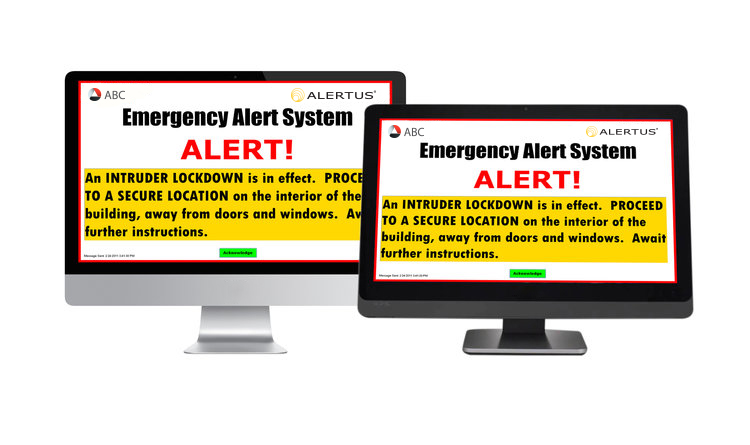The Search for a Comprehensive Emergency Notification System
Overview
Location: Cambridge, MA
Medical Center Type: Urban
Personnel/Staff: 3,276
Licensed Beds: 480
Medical Center Size: 3 hospital campuses, 65 buildings
Following the Boston Marathon bombings in 2013, Cambridge Health Alliance searched for a more robust emergency mass notification system. Located in five communities across Boston, the medical center needed a system that could provide comprehensive notification coverage to the approximately 6,000 people that comprise the healthcare system’s staff and contractors.
Christian Lanphere, Ph.D., director of safety and emergency management; Howard Langham, lead telecommunications technician; and Joyce Mullane, director of telecommunications at Cambridge Health Alliance, discussed the medical center’s unique challenges and solutions.
Challenges
Boston Marathon Bombings
The Boston Marathon bombing was a terrible event that affected people throughout the Boston area. Medical centers and hospitals, in particular, had a tough time getting external communications out to staff. “The commercial telephone systems were overloaded, so it was challenging to communicate by phone,” explains Christian Lanphere, safety and emergency management director at Cambridge Health Alliance. “Also, because this is a college town and most students text, those systems were busy.”
In many ways, the Boston Marathon bombings drove Cambridge Health Alliance’s search for a better, more comprehensive emergency notification system. The event unfolded quickly from an emergency management standpoint, so many vital decisions had to be made almost immediately. Because most communications systems were down, it was nearly impossible to reach hospital personnel. “There was a lot of confusion for staff about whether or not to go in,” says Lanphere. “We had no good way to reach out to people. If people were communicated to, they were communicated to by telephone. It was very unorganized.”
Many organizations implemented lockdowns following the bombings and during the search that followed because information on unfolding events was scarce, and many lines of communication were already down or overloaded. “For many of us in the emergency management community, our reaction was to put everything in lockdown—don’t let anybody move because there could be bombs going off all over the city,” says Lanphere. “The last thing you want to do is keep people on the street.”
Weather-Related Emergencies
Outside of unexpected events such as the Boston Marathon bombings, Cambridge Health Alliance must handle regular emergencies—the most common being the harsh Northeastern winters. “One of our biggest vulnerabilities in this area of the country is the weather, especially in the wintertime,” says Lanphere. The 2014–15 winter proved especially hard on Boston, resulting in record snowfall for the area.
Previously Cambridge Health Alliance used email notifications to communicate weather-related emergencies to staff. “We had a lot of difficulties trying to get communication out to the staff, says Lanphere. “Sometimes our email notifications would take 45 minutes to get to everybody. There were just a lot of steps, and it took a lot of time to try and get communication out instantly to people, so everyone received the message at the same time. That was probably our biggest reason for looking at something with mass notification.”
Solution
Transition to Comprehensive Emergency Notification
The wall-mounted Alertus Alert Beacon® sounds, flashes, and displays an alert message in the event of an emergency.
Cambridge Health Alliance also has to be prepared for several possible on-site emergencies that require immediate notification, particularly the medical center’s Code Pink alert for baby abductions. Joyce Mullane, director of telecommunications at Cambridge Health Alliance, explains that with the Alertus System, “there’s a way to announce a Code Pink alert using the overhead paging system and strategically located Alert Beacons immediately so that staff are aware of it and can put a plan in place right away.”
Howard Langham, the lead telecommunications technician at Cambridge Health Alliance, says that information delays were a big concern before the medical center transitioned to the Alertus system. “We were having an issue where if you pressed that button when it got to our operators who do the overhead page, there was a delay. Using the Alertus system (with the Alert Beacons and the text-to-speech through our paging system) cuts back on that delay time.”
Alertus Desktop Notification
Computer desktop notification is another tool Cambridge Health Alliance finds very useful when communicating with staff on some issues. “When we have a widespread system or network outages, generally the way to communicate to people is to send them something across their desktop,” says Mullane. “System and network outages are very critical situations for us. So we’ve used the Alertus system to send a desktop notification and updates so that staff is aware of the stages we’re going through, and it’s been beneficial and well received.”
Lanphere says the medical center can also utilize the desktop notification’s different alerting methods (full screen vs. partial screen popups) depending on the type of announcement or emergency. “We try to use the full-screen desktop notification for an imminent emergency when people need to take notice. I think that’s a great tool for the Code Pink infant abduction system, violence in our building, or some mass shooting,” says Lanphere. “It’s something immediately on your screen, and you need to pay attention to it right now versus a small pop-up screen with instructions.”




